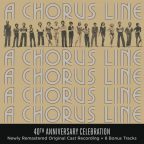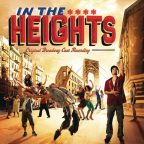Singing along with Broadway
If mainstream pop just isn’t your thing, try listening to these cast albums to get a taste of the world of musical theater
Amy Miyahara, Asst. A&E Editor
September 13, 2017
Musical theater music is most definitely a deviation from typical pop music, but it is one of the most enjoyable and rewarding genres of music. Each song allows the listener to personally connect to a specific character in a specific situation.
Every Broadway cast album is unique in that it presents a storyline, lyrics and ambiance unlike any other, and although Broadway music has evolved throughout the ages, it has continued to bring a timeless joy to listeners everywhere. From classic to contemporary, these are some of the musical soundtracks worth taking a listen to.
The King and I (1951): Based on the true story of Anna Leonowens, “The King and I” tells the story of an English teacher who travels to Siam to tutor the king’s children.
Written by iconic duo Richard Rodgers and Oscar Hammerstein II, who created a number of classic 1940s and 1950s musicals such as “Oklahoma!” and “The Sound of Music,” the show highlights the beauty of true love while addressing controversial themes of oppression and colonialism. The music from “The King and I” is cheerful at times and somber at others, but every song increases the listener’s sympathy for the characters.
When Lady Thiang sings “Something Wonderful,” she weighs both the flaws and the virtues of the king, allowing the listener to deeply understand Lady Thiang’s frustration, yet devoted love for her husband.
The cast recording as a whole has that classic musical theater vibe that so many have come to love, with heart-wrenching ballads that showcase the performer’s extreme vocal range, impressive vibrato and unbelievable control.
A Chorus Line (1975): Many musicals are admired for their flashy costumes and high-production dance numbers, but “A Chorus Line” shows the world behind this facade with songs full of honesty and raw emotion. The musical focuses on 17 dancers who are all auditioning for an upcoming Broadway production, showcasing the difficulty that performers face when trying to break into the industry.
Because the cast album features many different characters, every song has a distinct style, yet the album still manages to be cohesive in its overlaying theme of ambition and struggle. For example, “At the Ballet” shows how the art of ballet saved three of the characters from troubling family lives and physical insecurities, while “Nothing” is more lighthearted in its mockery of a character’s acting teacher who told her that she would never be successful.
While the auditionees all differ in race, family dynamic and personality, what comes through in each song is their love and passion for their craft. Some songs are hopeful, others nostalgic, some hilarious, others serious, but the lyrics all tell a unique story, making “A Chorus Line” a staple of the Broadway world.
Avenue Q (2004): It seems strange that the same man who wrote lyrics for “Frozen” also wrote the the songs for this musical, but this just goes to show Robert Lopez’s versatility as a lyricist. A loose parody of “Sesame Street,” with puppets making up most of the cast, “Avenue Q” is absolutely hilarious.
Although its songs could be considered offensive, they explore themes of racism, sexuality, heartbreak and rejection, as each of the characters learn to navigate the real-world challenges and disappointments of life after college and attempt to find their purpose.
This is perfectly encapsulated by “What Do You Do with a B.A. in English/ It Sucks to be Me,” which starts off with the main character expressing his desire to make a difference in the world despite his concerns for the future, before introducing the rest of the characters and their various daily problems. In an unexpected but not undeserved victory, “Avenue Q” beat out the popular “Wicked” for the 2004 Best Musical Tony Award, and while the songs from the latter might be more typical of a Broadway hit, “Avenue Q” is distinct in its spurts of unexpected humor and satirical songs.
While the lyrics and melodies of the album are simple, emulating the vibe of “Sesame Street,” this further adds to the humor of the show by putting the complicated aspects of adult life in the format of a children’s television show.
In the Heights (2008): There’s a reason the Diamond Bar High School drama department chose this production as its spring musical last school year. Lin-Manuel Miranda’s “Hamilton” has taken pop culture by storm over the past two years, but what some people do not know is that his first musical, “In the Heights,” is just as good.
The show revolves around the daily life of Latin-American families living in the Washington-Heights neighborhood of New York, as they deal with financial troubles and their desires to pursue life beyond the barrio. The soundtrack is as versatile as that of “Hamilton,” with colorful instrumentation and upbeat percussion that will excite any listener.
A good example of this is “Blackout,” which shows all of the character’s reactions to losing electricity and their resulting feelings of powerlessness, through a mixture of rapping, emotional duets and full-ensemble singing. For those who enjoy Miranda’s use of syncopation and slant rhyme in “Hamilton,” “In the Heights” showcases this same style, while incorporating a unique Latin-American flair.
The cast album has a perfect balance of energetic rap songs and more sensitive, personal ballads, all with a modern sound that listeners of all ages will enjoy.




Read Next










